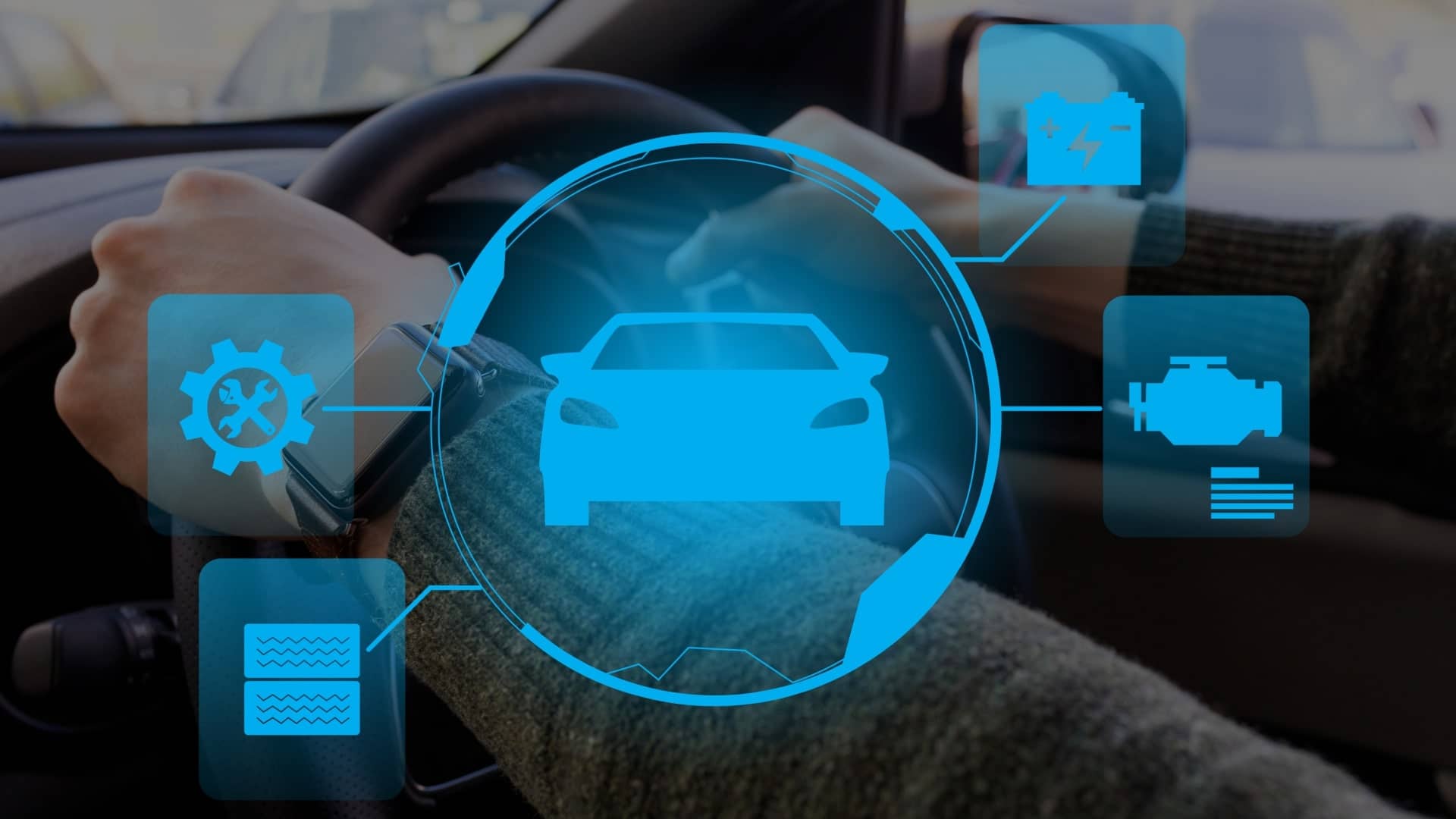
Understanding Fleet Telematics System
A fleet telematics system is a blend of vehicle technology, communications, and informatics. It involves the use of telecommunication devices to transmit data in real-time from vehicles to a central management system. This technology tracks location, movement, status, and behavior of a vehicle within a fleet.
How Fleet Telematics Works?
Vehicle Tracking:
The core function of a fleet telematics system is vehicle tracking. GPS technology plays a crucial role here. Each vehicle in the fleet is equipped with a GPS device that communicates with satellites to determine its precise location. This information is transmitted back to a central server, allowing fleet managers to monitor vehicle movements on a digital map in real time.
Data Collection:
The system collects a wide range of data, including vehicle speed, fuel consumption, engine status, and driver behavior. Sensors and devices installed in the vehicles capture this information and send it to the central server. This data forms the foundation for detailed analysis and reporting.
Remote Diagnostics:
Fleet telematics systems can also perform remote diagnostics. They monitor the vehicle’s health by collecting information about engine performance, fluid levels, and mechanical issues. If a problem is detected, the system can notify the fleet manager, enabling proactive maintenance to prevent breakdowns and reduce downtime.
Driver Behavior Monitoring:
One of the critical aspects of fleet management is driver behavior. Telematics systems monitor actions such as harsh braking, rapid acceleration, and excessive speeding. This data helps fleet managers identify and address unsafe driving habits, promoting safer roads and reducing fuel consumption.
Route Optimization:
Efficient route planning is essential for reducing fuel costs and improving delivery times. Fleet telematics systems analyze traffic data in real-time and suggest optimal routes to drivers. This not only saves time and money but also reduces vehicle wear and tear.
Geofencing:
Geofencing is a feature that allows fleet managers to define specific geographical areas on the digital map. When a vehicle enters or exits these predefined zones, the system sends alerts and notifications. This is particularly useful for monitoring unauthorized vehicle usage or ensuring vehicles remain within designated service areas.
Reporting and Analytics:
Fleet telematics systems generate detailed reports and analytics based on the collected data. These reports offer insights into fuel efficiency, maintenance schedules, driver performance, and more. Fleet managers can use this information to make informed decisions and optimize fleet operations.
Integration with Other Systems:
Many fleet telematics systems offer integration with other software and applications, such as inventory management, scheduling, and billing systems. This seamless integration streamlines business processes and enhances overall efficiency.
What is different between GPS & Telematics?
GPS (Global Positioning System)
GPS, which stands for Global Positioning System, is a well-known technology used for location tracking. It relies on a network of satellites orbiting the Earth to pinpoint the exact geographical coordinates of a GPS-enabled device, such as a smartphone, car navigation system, or a standalone GPS tracker.
GPS Basics:
- GPS is primarily focused on providing real-time location information. It can accurately determine the latitude, longitude, and altitude of a device, allowing users to know where they are or where their assets are located.
- Applications:
- Navigation: GPS is commonly used for turn-by-turn directions while driving or walking, guiding users to their desired destinations.
- Location Sharing: GPS allows individuals to share their real-time location with others, enhancing safety and convenience.
- Asset Tracking: Many businesses use GPS to track the movement of vehicles, equipment, or even pets.
Telematics:
Telematics is a broader technology that encompasses GPS but goes beyond just location tracking. It combines various sensors, wireless communication, and data analysis to provide a comprehensive view of vehicle behavior and performance.
Telematics Features:
- Unlike GPS, Fleet Telematics System provides a wealth of information beyond location, including:
- Vehicle Speed: Telematics systems can monitor the speed of a vehicle in real time.
- Fuel Consumption: They can track fuel usage, helping businesses optimize fuel efficiency.
- Driver Behavior: Telematics records driver behavior such as harsh braking, acceleration, and idling time.
- Engine Health: It can monitor the vehicle’s engine health, alerting for maintenance needs.
- Vehicle Diagnostics: Telematics can collect data on engine codes and performance issues.
- Applications:
- Fleet Management: Telematics is widely used in commercial fleets to improve safety, reduce operational costs, and enhance overall efficiency.
- Insurance: Some insurance companies offer usage-based insurance (UBI) programs that use telematics data to determine premiums.
- Asset Protection: Telematics helps prevent theft by providing real-time tracking and alerts.
Why telematics is needed?
Enhancing Vehicle Safety
Telematics plays a vital role in improving vehicle safety, which is a top priority for everyone on the road. Through various sensors and GPS tracking, telematics can provide real-time information about a vehicle’s speed, location, and driving behavior. This data helps identify risky driving habits, allowing for timely intervention to prevent accidents. Additionally, telematics can automatically alert emergency services in case of a crash, potentially saving lives.
Optimizing Fleet Management
For businesses that rely on fleets of vehicles, Fleet Telematics System is a game-changer. It enables companies to track their vehicles’ movements, monitor fuel consumption, and even schedule maintenance based on actual usage. This not only reduces operating costs but also ensures that deliveries are made on time, improving customer satisfaction.
Reducing Insurance Costs
Telematics can be a boon for drivers looking to save on insurance premiums. Many insurance companies offer usage-based insurance (UBI) programs, where drivers can opt to have their driving behavior monitored using telematics devices. Safe drivers are rewarded with lower premiums, creating an incentive for responsible driving.
Environmental Benefits
Telematics can help reduce the carbon footprint of vehicles. By monitoring fuel consumption and driving patterns, it becomes possible to optimize routes, reduce idle time, and minimize emissions. This is not only environmentally friendly but also leads to cost savings through reduced fuel consumption.
Asset Tracking and Security
Whether it’s construction equipment, trailers, or high-value cargo, telematics provides real-time location data, helping prevent theft and recover stolen items. It offers peace of mind to businesses and individuals alike.
Key Features to Look For
When selecting a fleet telematics system, consider these essential features:
- Real-Time Tracking: Essential for monitoring vehicles and optimizing routes.
- Fuel Management: Helps in identifying fuel wastage and optimizing fuel consumption.
- Safety Features: Includes monitoring driving behavior and vehicle maintenance alerts.
- Reporting and Analytics: Provide insights into fleet performance, helping in making data-driven decisions.
- Ease of Use: A user-friendly interface is crucial for efficient operation and integration.
Advantages of Fleet Telematics Systems
Implementing a fleet telematics system offers numerous advantages:
- Cost Reduction: By optimizing routes and reducing fuel consumption.
- Enhanced Safety: Improves driver behavior and reduces accident rates.
- Compliance Ease: Helps in adhering to legal and environmental regulations.
- Operational Efficiency: Streamlines operations and improves customer service.
- Environmental Benefits: Reduces carbon emissions through efficient driving and route management.
Conclusion
Choosing the right fleet telematics system is a strategic decision that can significantly impact the efficiency and profitability of your business. By understanding the essential features and benefits of these systems, you can make an informed choice that aligns with your business objectives and operational needs.


